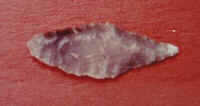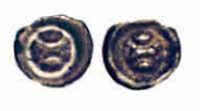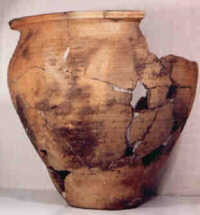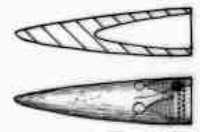 |
Arrow head |
 |
Coin - XIIw |
 |
Small vessel |
 |
Pot |
 |
Decorated bone arrow |
 |
Offering vessel |
 |
Sharpener |
Most of the items found on the site comprise of sherds and bones of animals. Out of 1.5 tons of sherds we were able to reconstruct a few dozen pots. Rather large remains of fish bones indicate the importance of fishing in the local waters and even imports of fish (herring) from the Baltic which is situated about 200 kilometers north of Grzybowo.
Flint:
We found over 700 pieces of flint representing a few tools and mostly byproducts and rejects left by mesolitic and neolitic people who lived in the area.
Items made of bone:
Items made of bone are the most common findings from the middle ages. Most frequent are awls and needles. We found also arrows, combs, and a few cylinder sleeves for knives.
Iron:
Most of the items made with iron are so rusted that it is difficult to determine their use. Better preserved are the knives (primitive steel) and a decorated needle.
Coloured metals:
Most interesting are items made of silver: head bows, cylinder sleeves,a silver coin from the middle of tenth century (dirchem of Arab origin) and another one from the 12 century (button brakteat). Lead is represented by a whorl of a spindel and two weights for a balance.
Stone:
Sharpeners made from an imported from Silesia stone called fyllit are very frequent Other frequent artifacts are beads made of various stones, especially carnelian, amber and glas
Objects made from clay:
A few crucibles used to melt non ferrous metals are of special interest. Other clay objects found in large quantities are whorls of spindel, some decorated, used to spin woolen threads for weaving.
Items made from organic materials:
Quite a few wooden objects were found in deep layers where they were preserved in ground water Among them is a part of a wheel with openings for spokes, part of a bow and an arrow armed with an arrow head made from bone. A few pieces of rope and some sheets of leather with holes indicating sewing (shoes?) were also excavated.
Vessels made of clay:
Only a few intact small clay vessels were found. The larger were broken but quite a few could be reconstructed.
They have many different forms and decorations. Of interest is a vessel placed as offering in the wall. It is associated with magical ceremonies to assure
construction of good defensive fortifications.